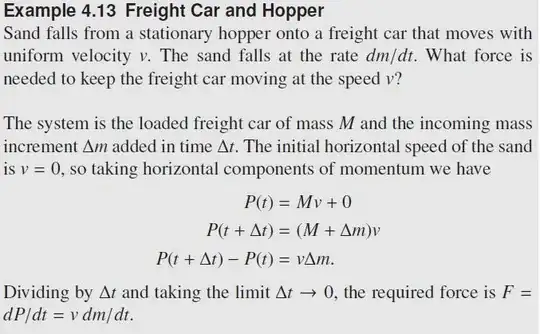I've been having trouble understanding this equation here derived in the picture given below. If I change reference frames to one which is moving at a velocity u with respect to the first frame, then the term $v$ in the equation would change to $(v-u)$ however as far as I can tell the $\frac{dm}{dt}$ can't change. Does this means these two observers would measure different values of force? So far, I've been told that all inertial reference frames measure the same value for a given force.
Also isn't $F=\frac{dp}{dt}$ only valid for systems with mass that is not varying with time? As they said in here: Second law of Newton for variable mass systems
If so, then why is the text considering $\frac{dp}{dt}$ to be the force?
